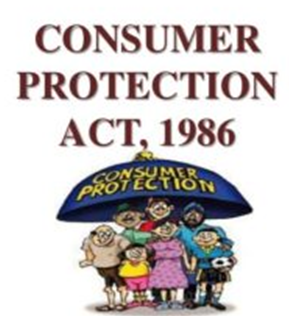- Books Name
- Understanding Economic Development Class-10
- Publication
- PathSet Publications
- Course
- CBSE Class 10
- Subject
- Economics
RIGHT TO JUSTICE

- As we previously studied, the consumer has every right to seek redressal. For this, certain simple steps have to be followed.
- The aggrieved person can first talk to the party that has done the misconduct.
- If the other party’s action is not satisfactory, the aggrieved person can take the matter into their own hands.
- The consumer can file a complaint before the appropriate consumer forum on his/her own with or without the services of lawyers.
- The aggrieved party has to fill out a registration form at the consumer court who then notifies the other party.
- At the court, the judge verifies documents, hears the arguments of both the parties, and then announces the verdict.
- The consumer movement in India has led to the formation of various organizations, locally known as consumer forums or consumer protection councils.
- They guide consumers on how to file cases in the consumer court. On many occasions, they also represent individual consumers in consumer courts. These voluntary organizations also receive financial support from the government for creating awareness among people.
- Under COPRA, three-tier quasi-judicial machinery at the district, state and national levels was set up for redressal of consumer disputes.
- The district-level court called District Forum deals with cases involving claims up to Rs 20 lakh.
- The state-level court called State Commission between Rs 20 lakh and Rs 1 crore.
- The national-level court — National Commission — deals with cases involving claims exceeding Rs 1 crore. If a case is dismissed in district-level court, a consumer can also appeal in the state and then in national-level courts.
LEARNING TO BE WELL INFORMED CONSUMERS
- When we as consumers become conscious of our rights, while purchasing various goods and services, we will be able to discriminate and make informed choices.
- However, how do we become one?
- The enactment of COPRA has led to the setting up of separate departments of Consumer Affairs in central and state governments. Through various means, the government spread information about legal processes, which people can use.

- Certain logos and certifications like ISI, Agmark, Hallmark, help consumers get assured of quality while purchasing the goods and services. The organizations that monitor and issue these certificates allow producers to use their logos provided they follow certain quality standards.
- It is not compulsory for all organizations but is mandatory for those products that can be hazardous to human lives. Example: LPG cylinders, food colours and additives, cement, packaged drinking water, etc.
- India has been observing 24 December as National Consumers’ Day. It was on this day that the Indian Parliament enacted the Consumer Protection Act in 1986.
- There are today more than 700 consumer groups in the country of which only about 20-25 are well organized and recognized for their work
- However, the consumer redressal process is becoming cumbersome, expensive and time-consuming.
- In most purchases cash memos are not issued hence, evidence is not easy to gather. Moreover, most purchases in the market are small retail sales. The existing laws also are not very clear on the issue of compensation to consumers injured by defective products.
- Despite the very shortcomings in the laws and implementation of the rules and regulations, we as consumers can make voluntary efforts by active participation in consumer movements.

 PathSet Publications
PathSet Publications
